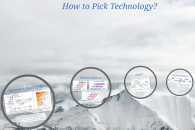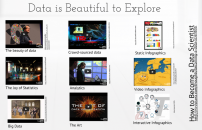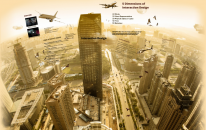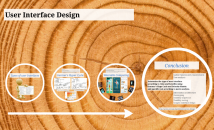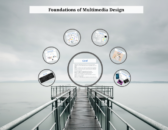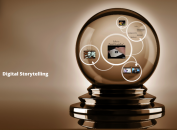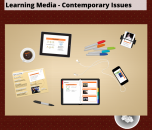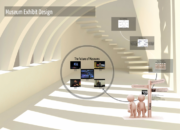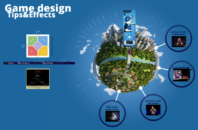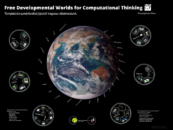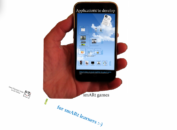Chapters
Scope
Definitions
Media (singular medium) are the storage and transmission channels or tools used to store and deliver information or data. It is often referred to as synonymous with mass media or news media, but may refer to any means of information communication.
The beginning (SITE) of human communication through designed channels, i.e. not vocalization or gestures, dates back to ancient cave paintings, drawn maps, and writing. In the last century, a revolution in telecommunications has greatly altered communication by providing new media for long distance communication. The first transatlantic two-way radio broadcast occurred in 1906 and led to common communication via analogue and digital media:
• Analog telecommunications include some radio systems, historical telephony systems, and historical TV broadcasts.
• Digital telecommunications allow for computer-mediated communication, telegraphy, and computer networks.
Modern communication media now allow for intense long-distance exchanges between larger numbers of people (many-to-many communication via e-mail, Internet forums, and teleportation). On the other hand, many traditional broadcast media and mass media favor one-to-many communication (television, cinema, radio, newspaper, magazines, and also facebook).
Visual communication is communication through visual aid and is described as the conveyance of ideas and information in forms that can be read or looked upon. Visual communication in part or whole relies on vision, and is primarily presented or expressed with two dimensional images, it includes: signs, typography, drawing, graphic design, illustration, colour and electronic resources. It also explores the idea that a visual message accompanying text has a greater power to inform, educate, or persuade a person or audience.
Typography is the art and technique of arranging type in order to make language visible. The arrangement of type involves the selection of typefaces, point size, line length, leading (line spacing), adjusting the spaces between groups of letters (tracking) and adjusting the space between pairs of letters (kerning).
In traditional typography, text is composed to create a readable, coherent, and visually satisfying whole that works invisibly, without the awareness of the reader.
Legibility ‘refers to perception’ and readability ‘refers to comprehension’. Typographers aim to achieve excellence in both. Legibility is primarily the concern of the typeface designer, to ensure that each individual character or glyph is unambiguous and distinguishable from all other characters in the font. Legibility is also in part the concern of the typographer to select a typeface with appropriate clarity of design for the intended use at the intended size. Readability is primarily the concern of the typographer or information designer. It is the intended result of the complete process of presentation of textual material in order to communicate meaning as unambiguously as possible. A reader should be assisted in navigating around the information with ease, by optimal inter-letter, inter-word and particularly inter-line spacing, coupled with appropriate line length and position on the page, careful editorial “chunking” and choice of the text architecture of titles, folios, and reference links.
Display/screen typography (pdf) is a potent element in graphic design, where there is less concern for readability and more potential for using type in an artistic manner. Type is combined with negative space, graphic elements and pictures, forming relationships and dialog between words and images. Further fundamental typography guidelines apply for motion designers, which are however less standardised. Colour and size of type elements are much more prevalent than in text typography. Most display typography exploits type at larger sizes, where the details of letter design are magnified. Colour is used for its emotional effect in conveying the tone and nature of subject matter.
The evaluation of a good visual communication design is mainly based on measuring comprehension by the audience, not on personal aesthetic and/or artistic preference as there are no universally agreed-upon principles of beauty and ugliness. Excluding two dimensional images, there are other ways to express information visually – gestures and body language, animation (digital or analogue), and film. Visual communication by e-mail, a textual medium, is commonly expressed with ASCII art, emoticons, and embedded digital images.
Students studying visual communication are taught the basic physics of light, anatomy and physiology of the eye, cognitive and perception theories, colour theories, Gestalt psychology, aesthetics, natural reading patterns, design principles, semiotics, persuasion, camera/filming actions and image-types, and so forth. Colleges for visual communications differ in their approach, but most combine theory and practice in some form.
Visual communication takes place through pictures, graphs and charts, as well as through signs, signals and symbols. It may be used either independently or as an adjunct to the other methods of communication.
Visual aids are often used to help audiences of informative and persuasive speeches understand the topic being presented. Visual aids can play a large role in how the audience understands and takes in information that is presented. There are many different types of visual aids (drawings, photographs, models, graphs, maps, tables, objects) that have to be chosen depending on their preference and the information presented.
Recent research in the field has focused on web design and graphically-oriented usability. Graphic designers also use methods of visual communication in their professional practice. Visual communication on the World Wide Web is perhaps the most important form of communication that takes place while users are surfing the Internet. When experiencing the web, one uses the eyes as the primary sense, and therefore the visual presentation of a website is very important for users to understand the message or of the communication taking place.
Multimedia and the Internet require a completely new approach to writing. The style of writing that is appropriate for the ‘on-line world’ is highly optimized and designed to be able to be quickly scanned by readers. A good site must be made with a specific purpose in mind and a site with good interactivity and new technology can also be useful for attracting visitors. The site must be attractive and innovative in its design, function in terms of its purpose, easy to navigate, frequently updated and fast to download.
When users view a page, they can only view one page at a time. As a result, multimedia users must create a ‘mental model of information structure’.
E-learning theory describes the cognitive science principles of effective multimedia e-learning. Cognitive research and theory suggest that selection of appropriate concurrent multimedia modalities may enhance learning, as may application of several other principles.
References: Definitions and links (unless otherwise indicated as “site” or “pdf”) are copied and edited from English Language Wikipedia as of 1st September 2013. Titles could be further explored through indicated links.
Research
Design issues
Case-studies
- Béres, I., Magyar, T., Turcsányi-Szabó, M., Towards a Personalised, Learning Style Based Collaborative Blended Learning Model with Individual Assessment, in Informatics in Education, 2012, Vol. 11, No. 1, 1–28, Vilnius University 2012

